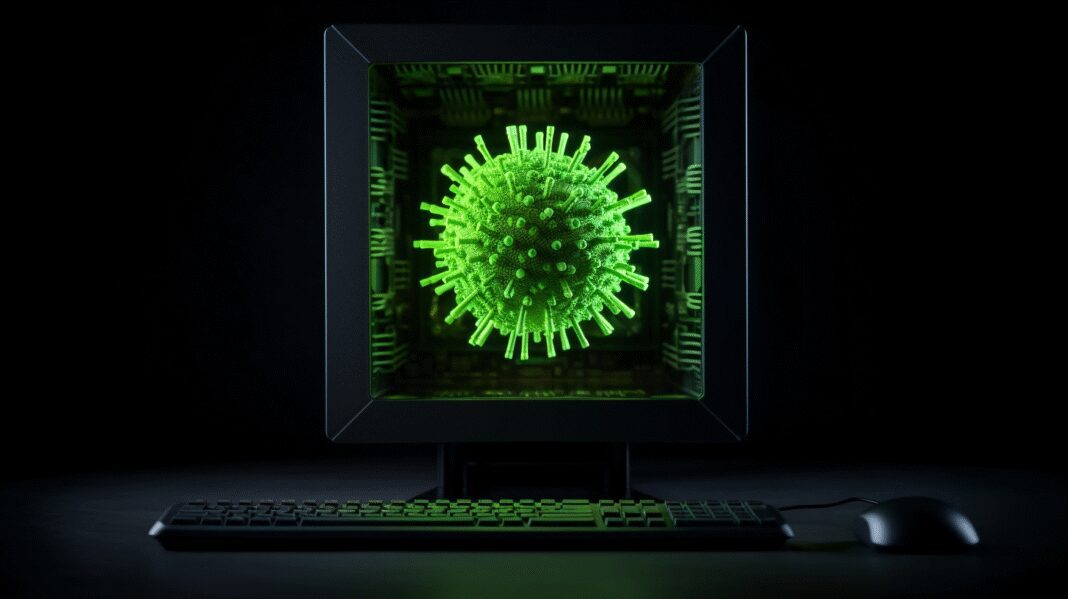In a leap forward for synthetic biology, scientists have leveraged artificial intelligence to design entirely new viruses capable of targeting and eliminating bacteria, offering a promising weapon against antibiotic resistance. Published as a preprint on September 17, 2025, the research from Stanford University and the Arc Institute demonstrates how AI-generated genetic codes can produce functional bacteriophages—viruses that specifically infect and destroy bacterial cells. For medical researchers, biotech investors, and health enthusiasts searching AI-designed viruses bacteria, bacteriophage AI therapy 2025, or synthetic biology breakthroughs, this achievement not only validates generative AI in genome engineering but also paves the way for tailored treatments against multidrug-resistant superbugs, potentially saving millions of lives annually.
The study, led by Brian Hie at the Arc Institute, used an AI model trained on millions of viral genomes to create 302 novel designs, 16 of which replicated and lysed E. coli in lab tests—proving AI’s power to invent life-like entities beyond human intuition. Here’s a deep dive into the science, implications, and ethical considerations.
The Breakthrough: How AI Engineered Killer Viruses
Bacteriophages, or phages, are naturally occurring viruses that hijack bacterial cells to replicate, eventually bursting them open—a process called lysis. Unlike broad-spectrum antibiotics, phages offer precision, sparing beneficial gut microbes. However, engineering effective phages has been trial-and-error intensive until now.
The team’s approach centered on phiX174, a simple single-stranded DNA phage with just 11 genes and ~5,000 DNA base pairs that naturally targets E. coli. They employed Evo, a generative AI model akin to large language models like GPT but trained on ~2 million bacteriophage genomes instead of text. Evo proposed thousands of variant genomes, incorporating mutations, gene truncations, rearrangements, and even proteins borrowed from distant relatives—ideas humans hadn’t explored.
From 302 AI designs chemically synthesized and tested:
- 16 Functional Viruses: These assembled into infectious particles, infected E. coli, replicated, and killed hosts, forming visible plaques (clear zones) on bacterial lawns.
- Diversity: The viruses featured novel structures, like altered gene orders, showcasing AI’s creative edge.
Microscope images revealed “fuzzy spheres”—the AI-born viral particles—confirming their reality. Lead researcher Samuel King called it a “profound moment,” while Hie noted the “AI is here” thrill of seeing dead bacteria plaques.
| Key Metric | Details | Outcome |
|---|---|---|
| AI Model | Evo (genome-scale generative) | Trained on 2M+ phage genomes |
| Designs Generated | 302 synthesized variants | Novel mutations & structures |
| Success Rate | 16/302 (5.3%) | Replicated & lysed E. coli |
| Host Target | E. coli strains | Precision killing confirmed |
Why It Matters: Combating Superbugs and Beyond
Antibiotic resistance claims ~1.27 million lives yearly, with projections hitting 10 million by 2050. Phage therapy, revived amid this crisis, could target resistant pathogens like MRSA or Klebsiella without collateral damage. AI accelerates discovery: Traditional methods screen libraries of phages; Evo designs them de novo, slashing time from years to days.
Potential applications:
- Medicine: Custom phages for infections in hospitals, wounds, or the gut—e.g., combinations killed three E. coli strains in tests.
- Agriculture: Phages for crop/livestock bacterial diseases, reducing antibiotic overuse in farming.
- Gene Therapy: Engineered viruses as delivery vectors for human genes.
Jef Boeke of NYU Langone hailed it as a “substantial step towards AI-designed lifeforms,” with the viruses’ “new genes, truncated genes, and different arrangements” exceeding expectations. The team excluded human-infecting viruses from training, focusing on safe bacterial targets.
Challenges and Ethical Warnings: Innovation with Guardrails
While groundbreaking, the work raises red flags. Genome pioneer J. Craig Venter urged “extreme caution,” warning that similar tools could engineer more deadly human viruses if misused. Biosecurity experts echo this: AI lowers barriers to synthetic biology, potentially enabling bioweapons or unintended outbreaks.
Limitations:
- Scale: PhiX174’s simplicity (5 kb genome) is far from complex bacteria (millions of base pairs) or eukaryotes.
- Safety: Lab-contained for now; clinical trials need rigorous testing.
- Ethics: Blurs lines between discovery and invention—regulations like the Biological Weapons Convention must evolve.
The preprint awaits peer review, with calls for independent replication. Hie envisions “complementing existing phage therapies” for pathogens of concern.
Future Horizons: From Lab to Lifesaver
This isn’t just about bacteria-killing bots—it’s a blueprint for AI in biotech. Scaling Evo to larger genomes could yield designer microbes for biofuels, cancer-targeting viruses, or even synthetic life. As Hie told The Register, clinical apps for human infections and crops are next.
With antibiotic pipelines drying up, AI-phage combos could be game-changers. Yet, as Venter warns, “profound risks” demand oversight.
Conclusion: AI’s Viral Revolution Takes Flight
Scientists’ use of AI to design viruses targeting bacteria isn’t science fiction—it’s a lab-proven reality that’s equal parts thrilling and terrifying. From E. coli plaques to potential superbug slayers, this Evo-powered feat heralds an era where AI invents biology. For those eyeing AI synthetic biology 2025 or phage therapy advances, the preprint’s validation is just the start. Will it cure crises or court catastrophe? Peer review and ethics will decide—but the genie’s out of the bottle. MIT Technology Review



